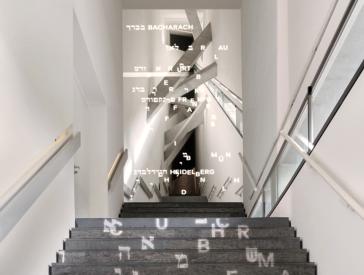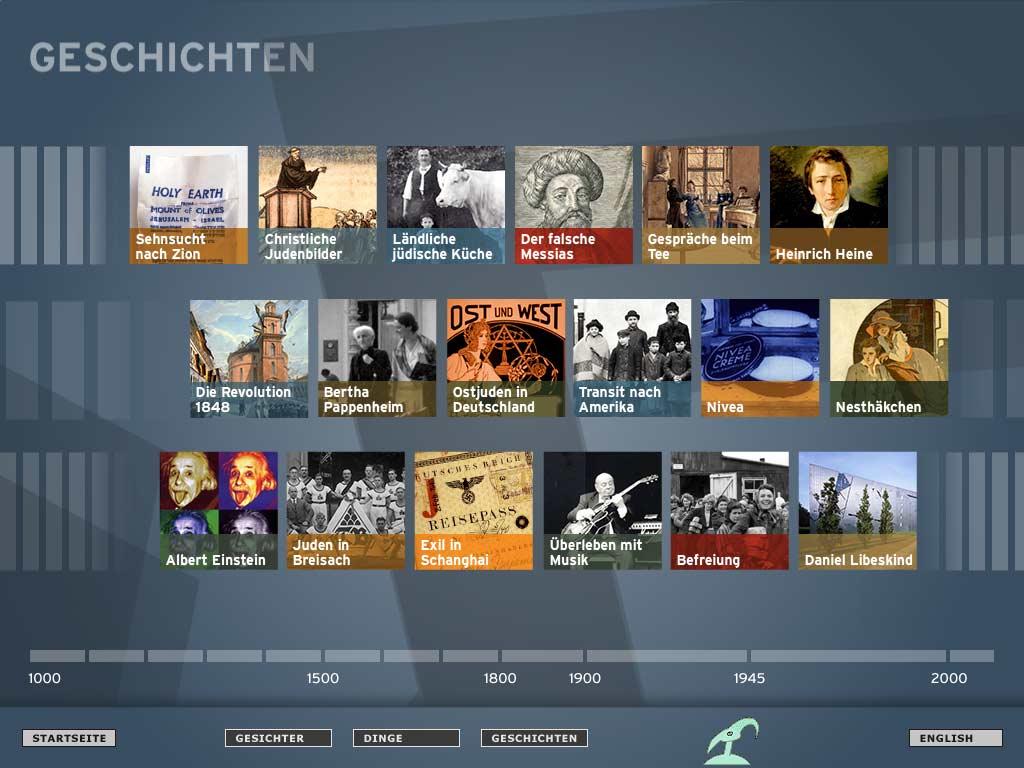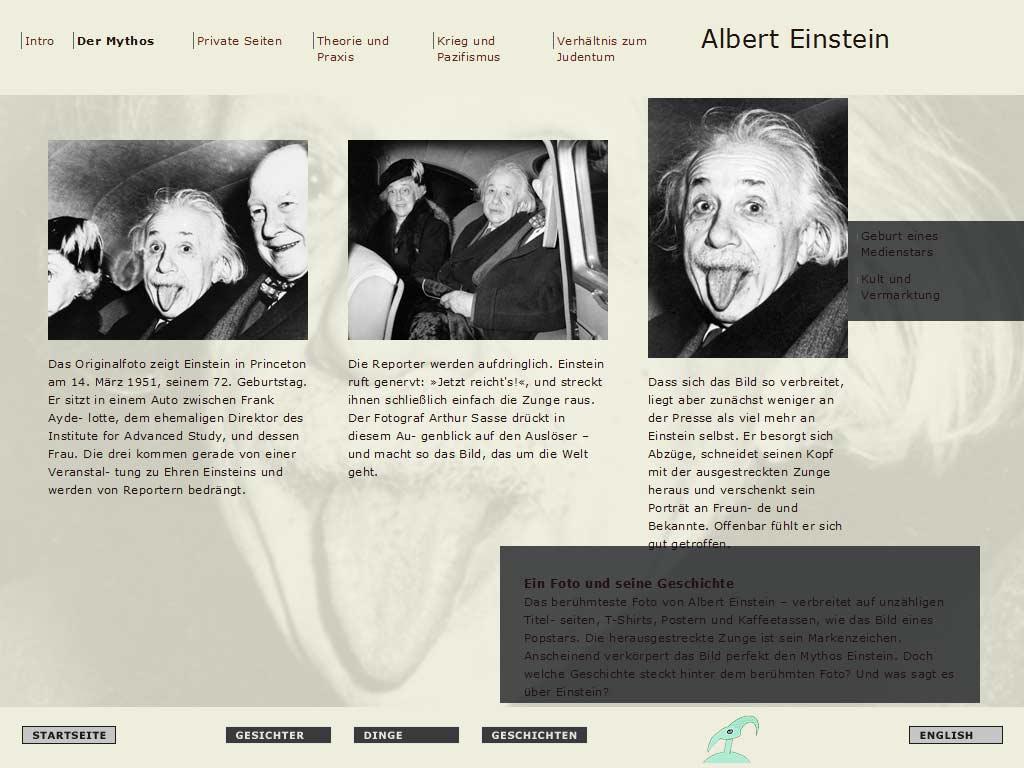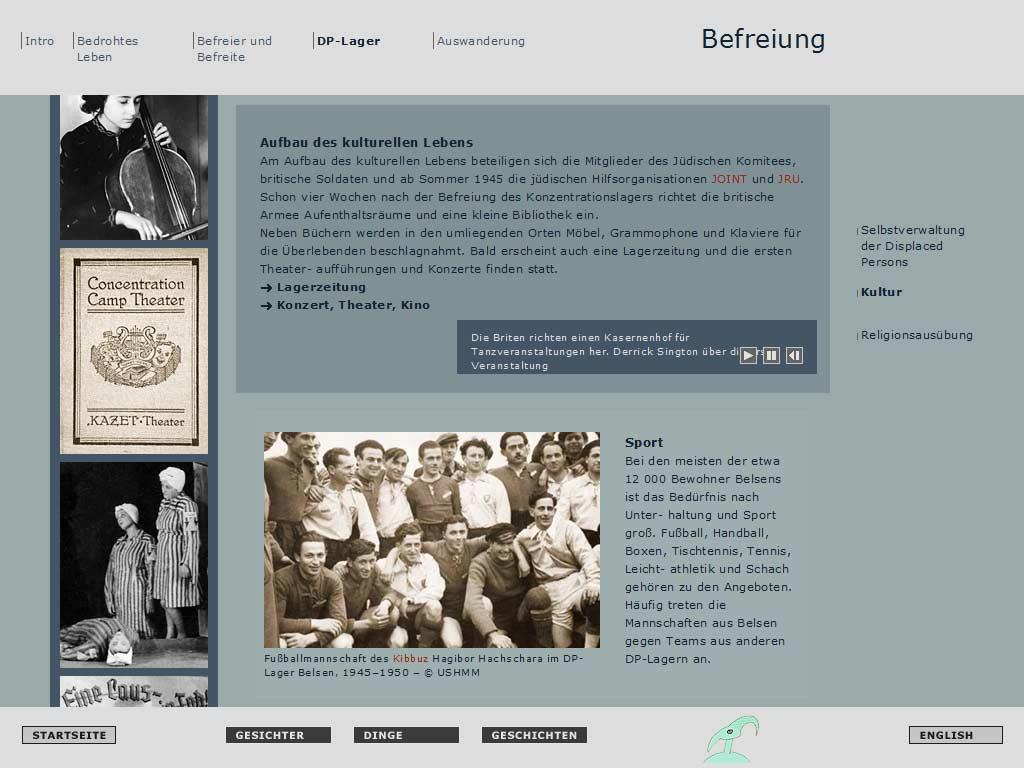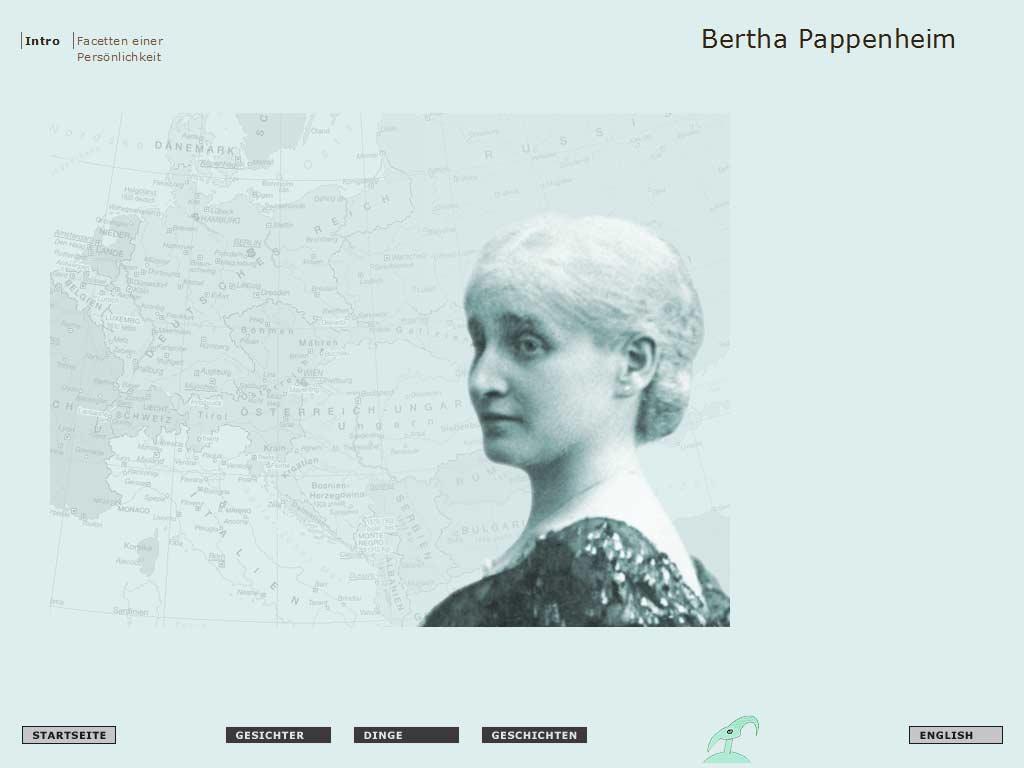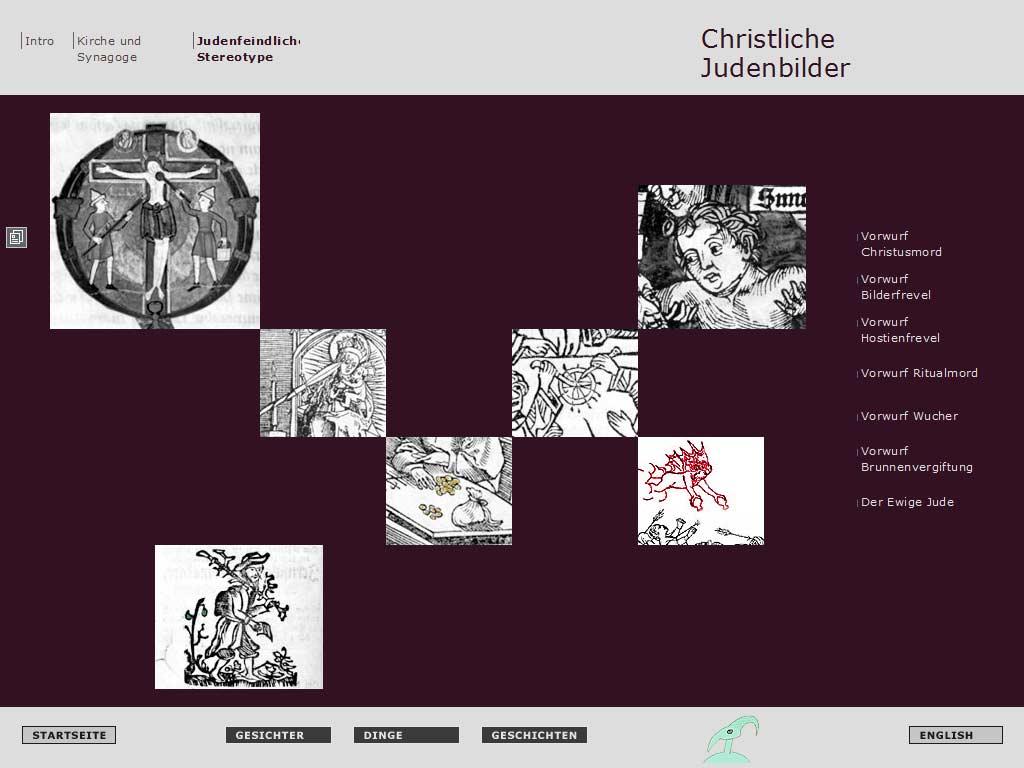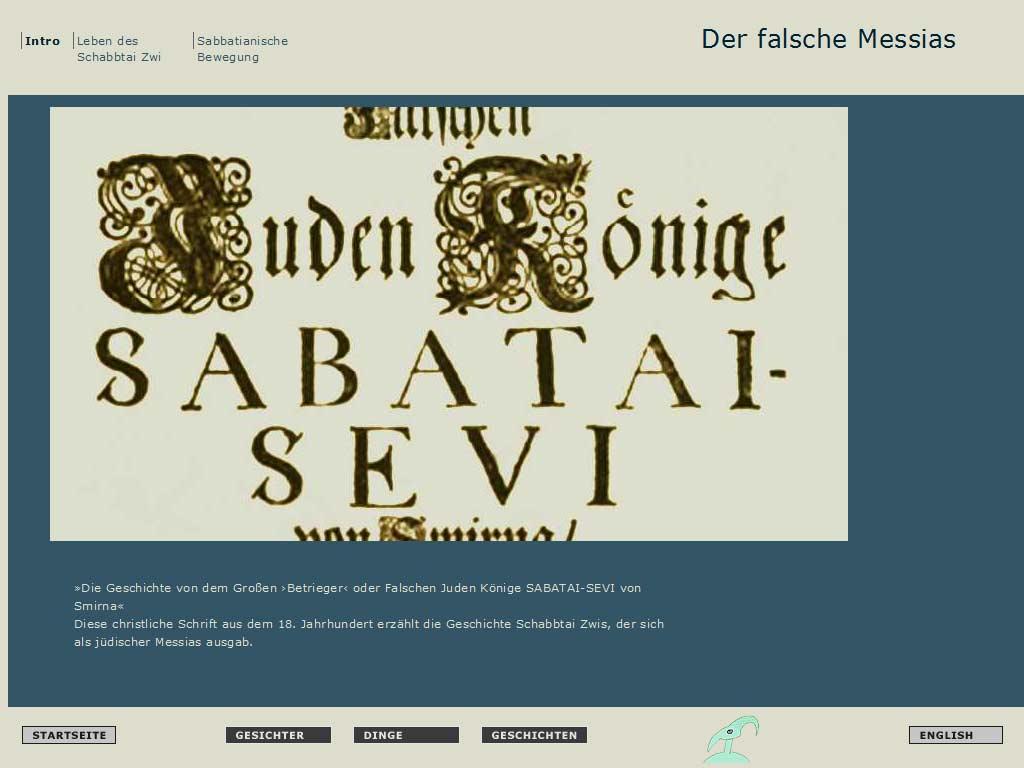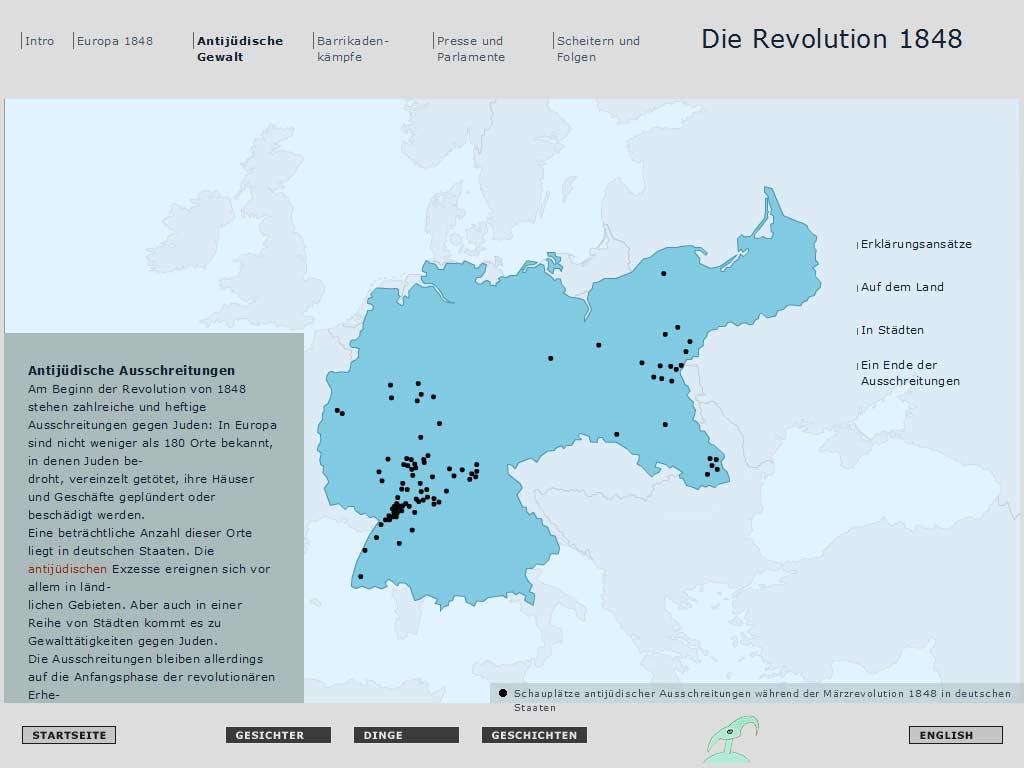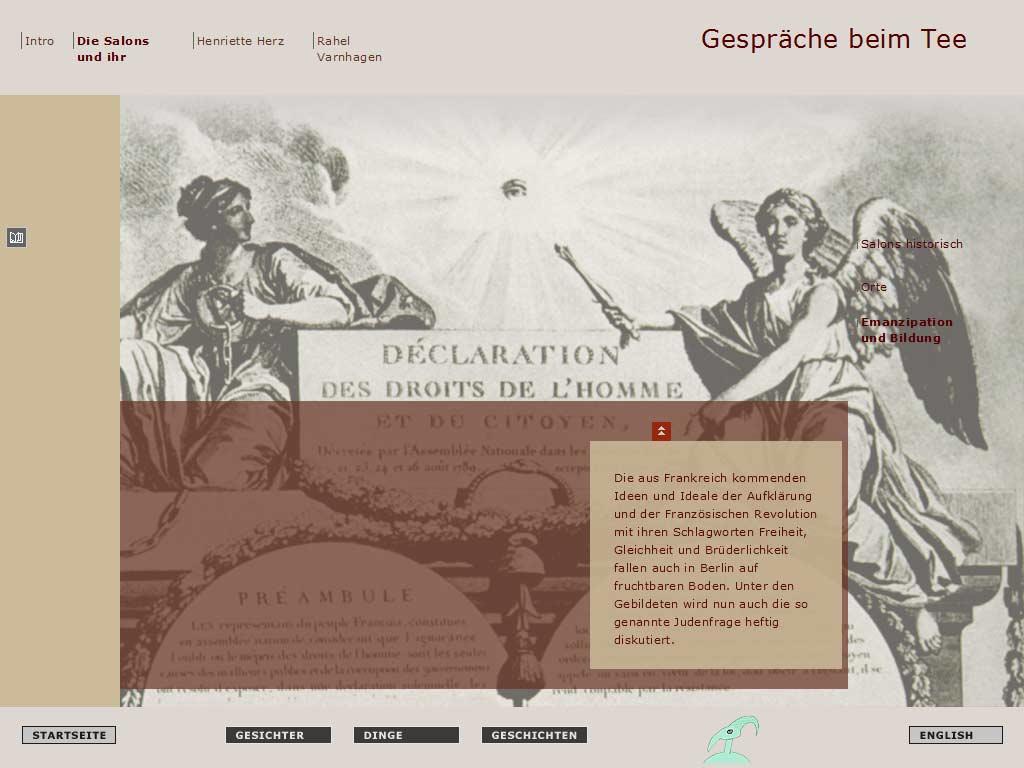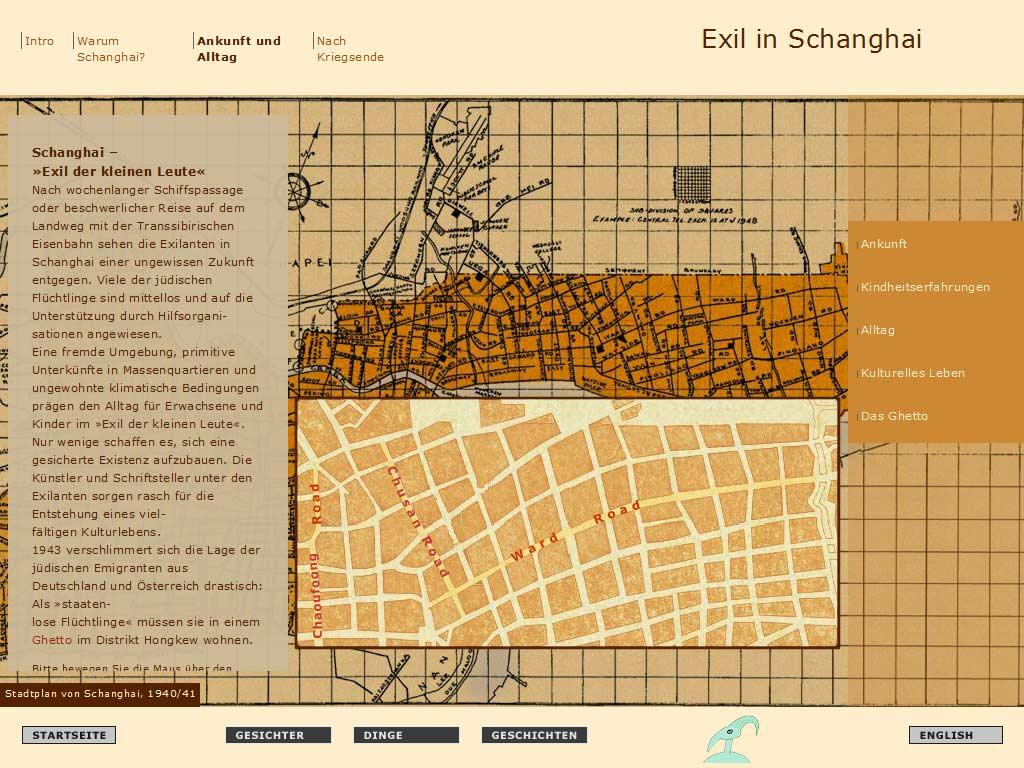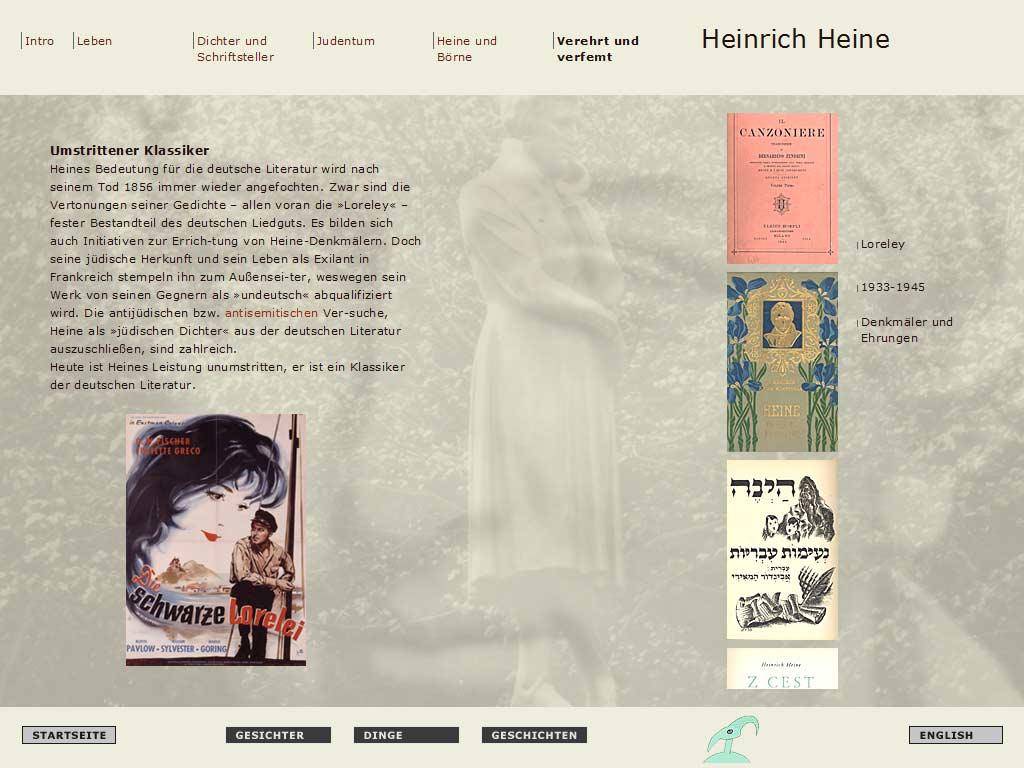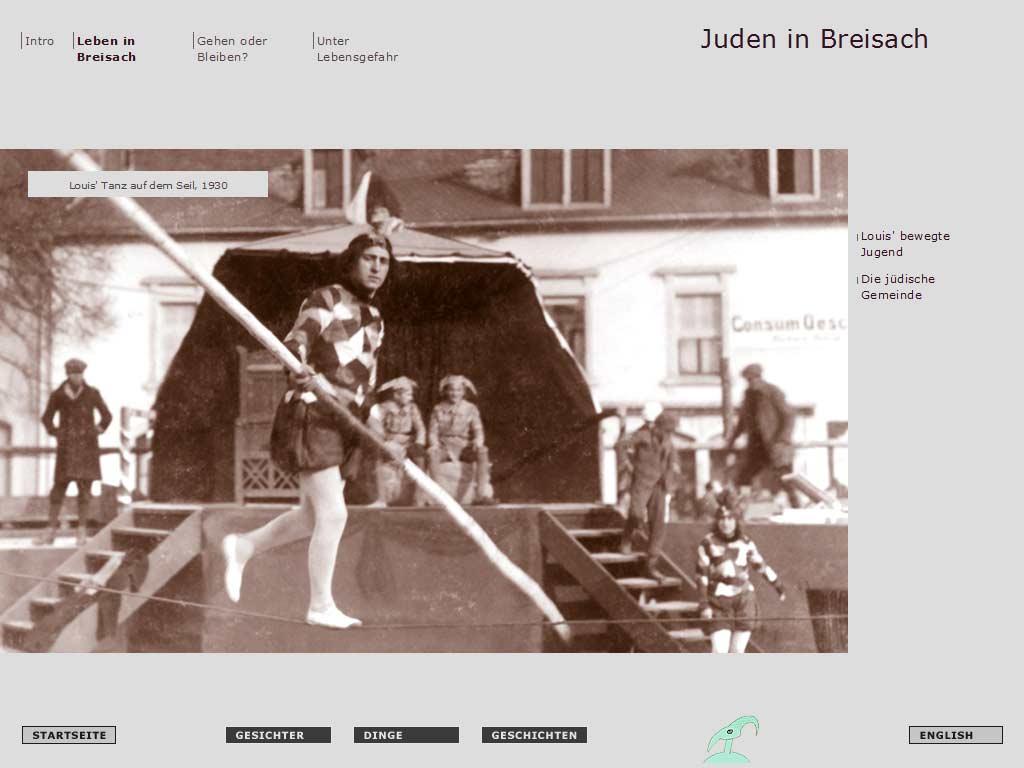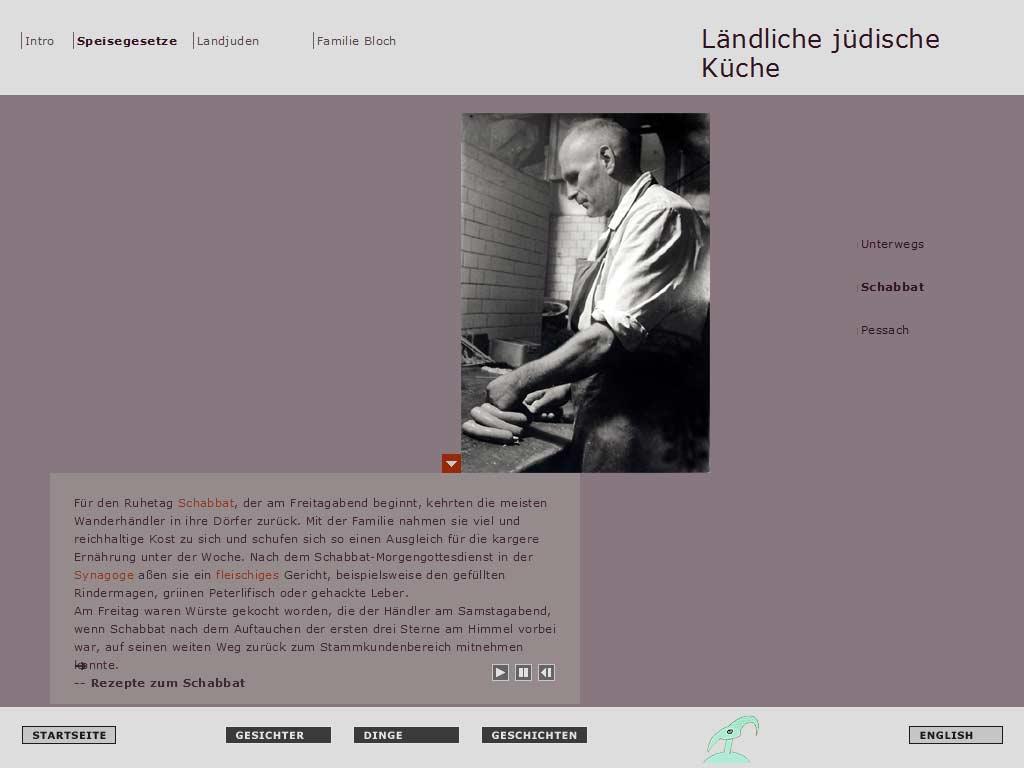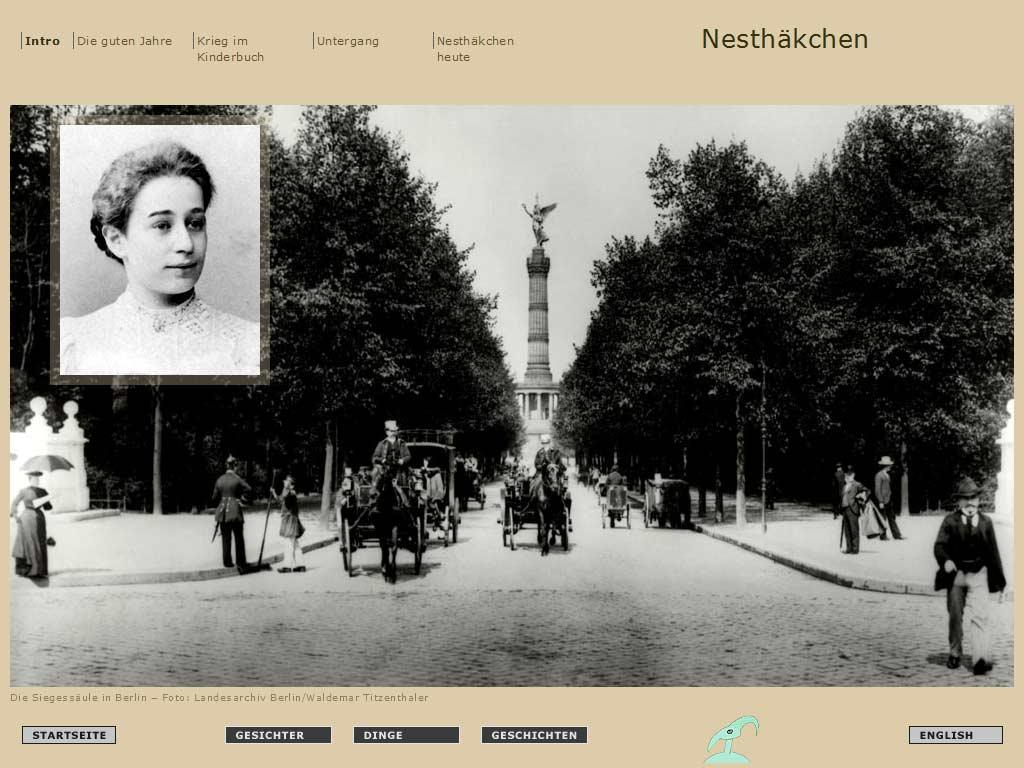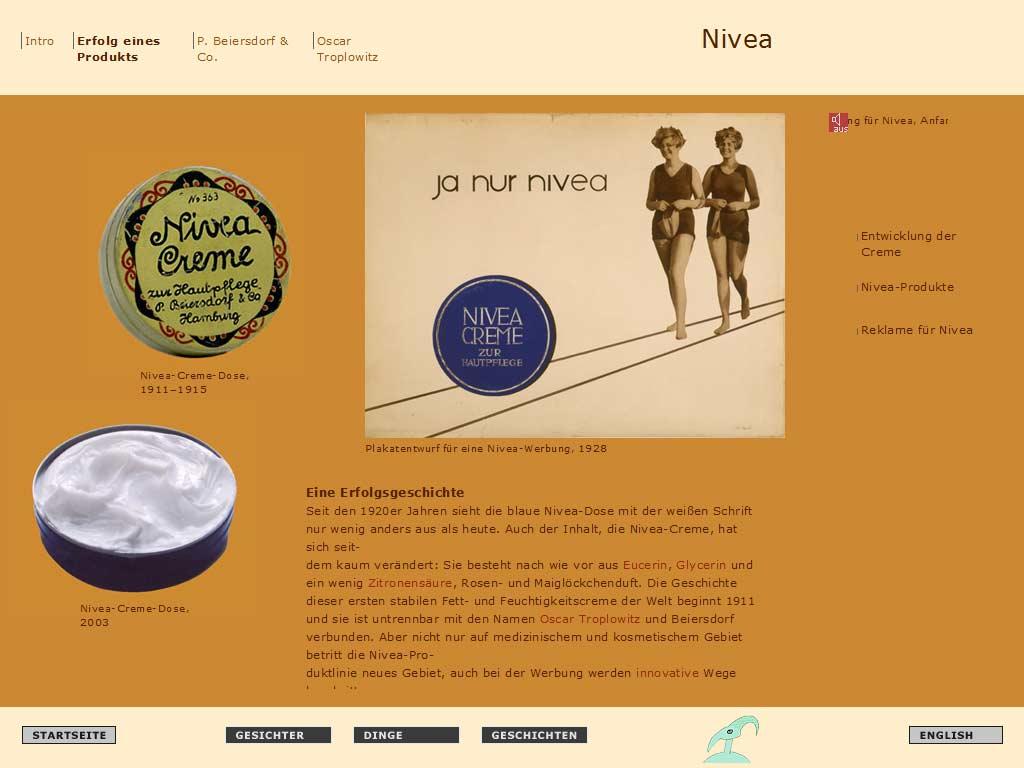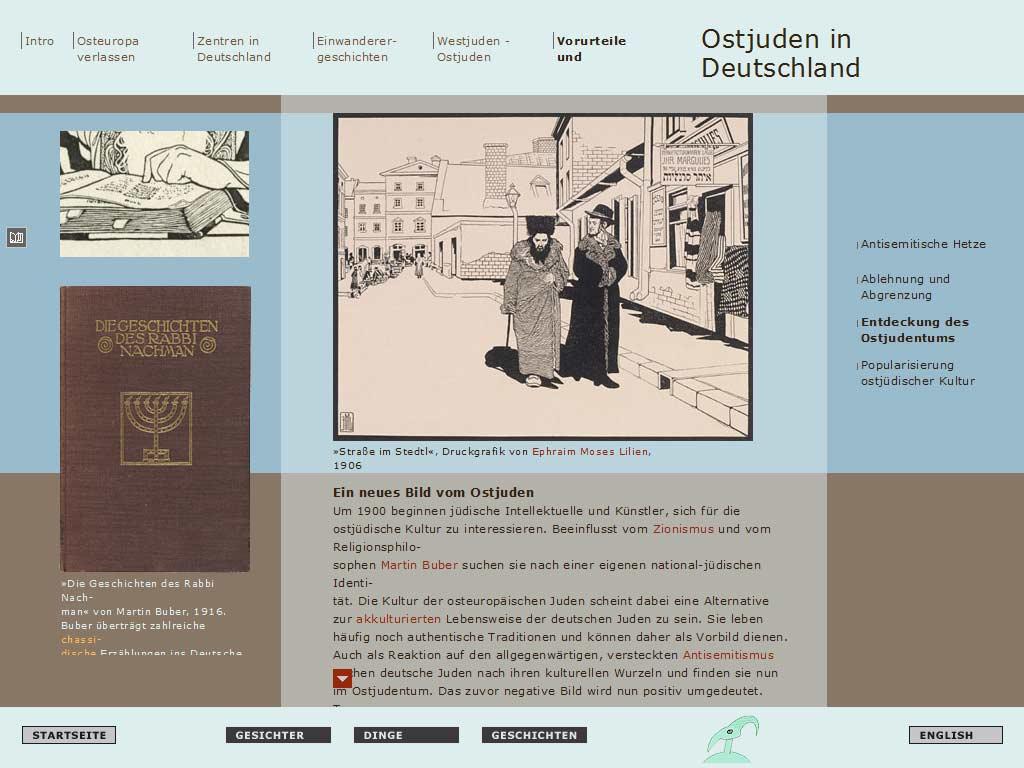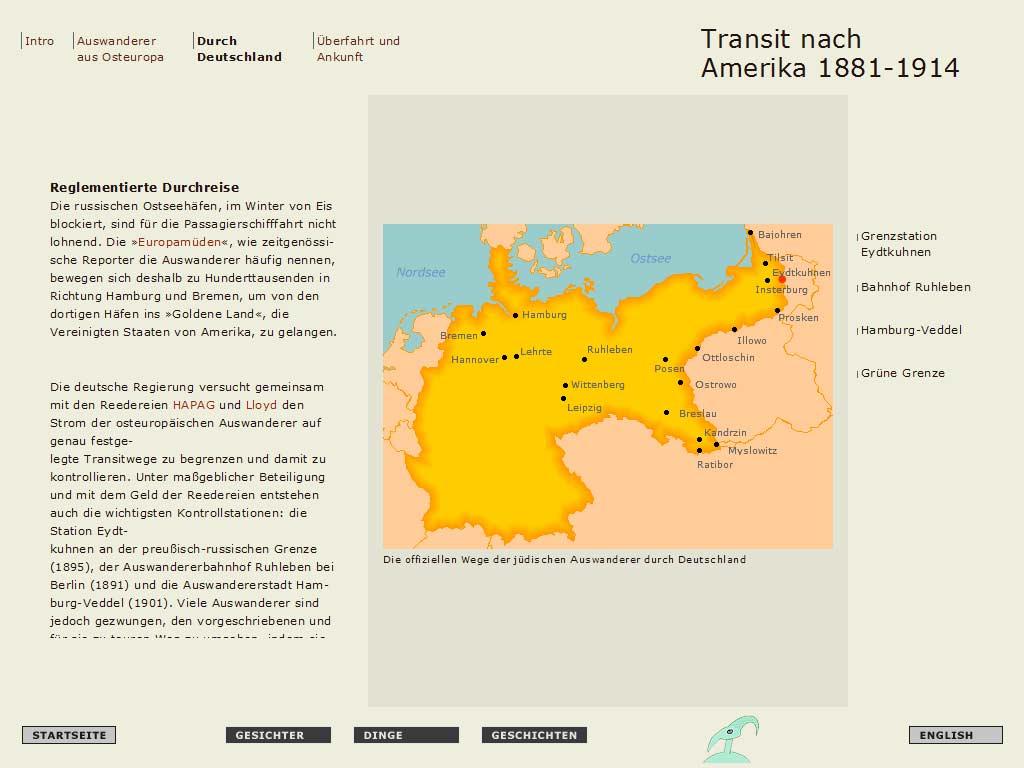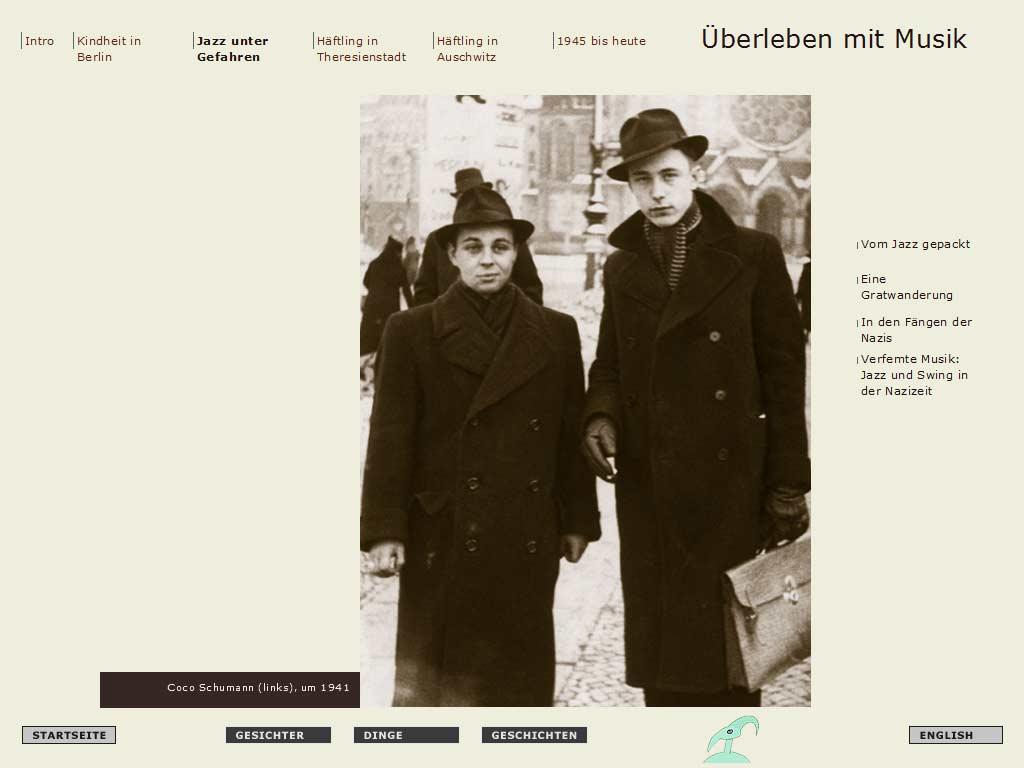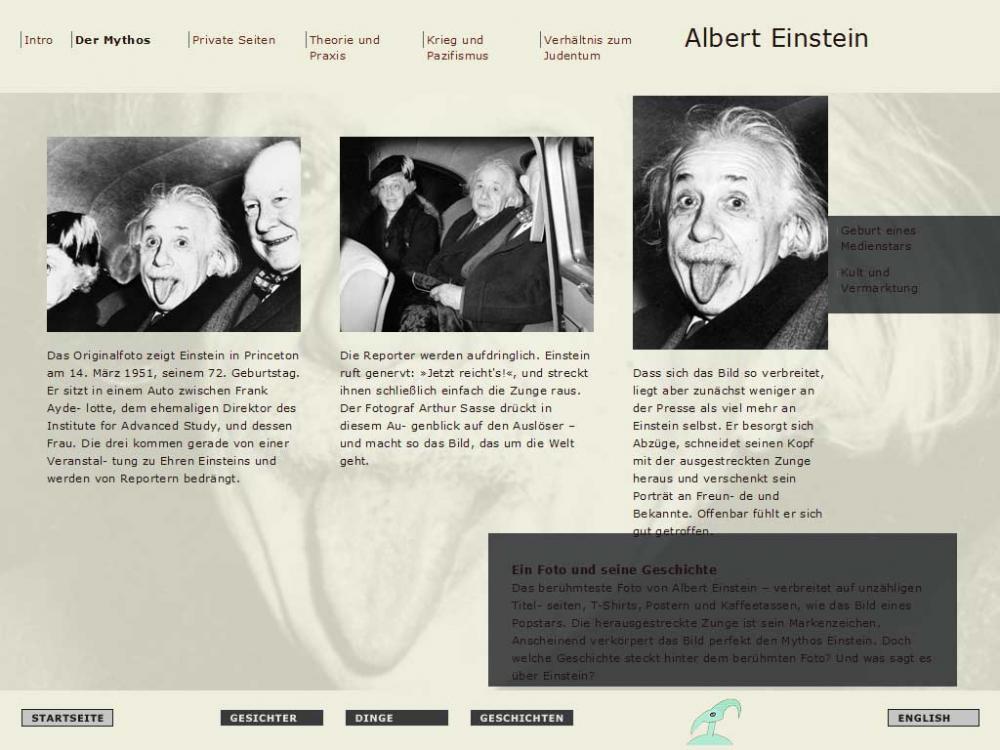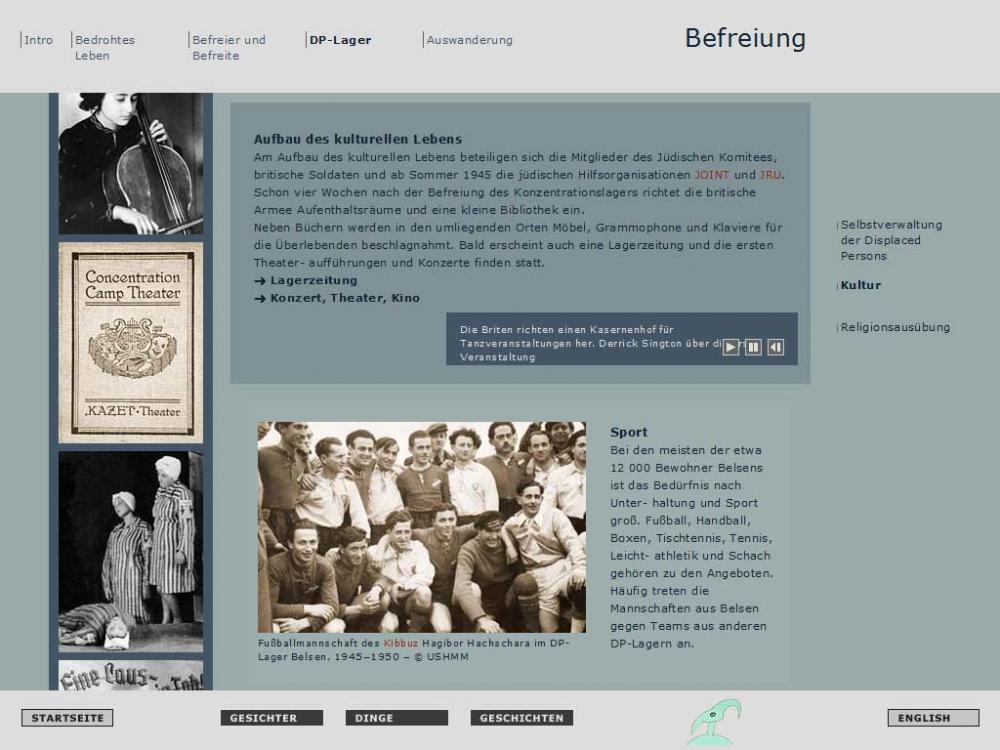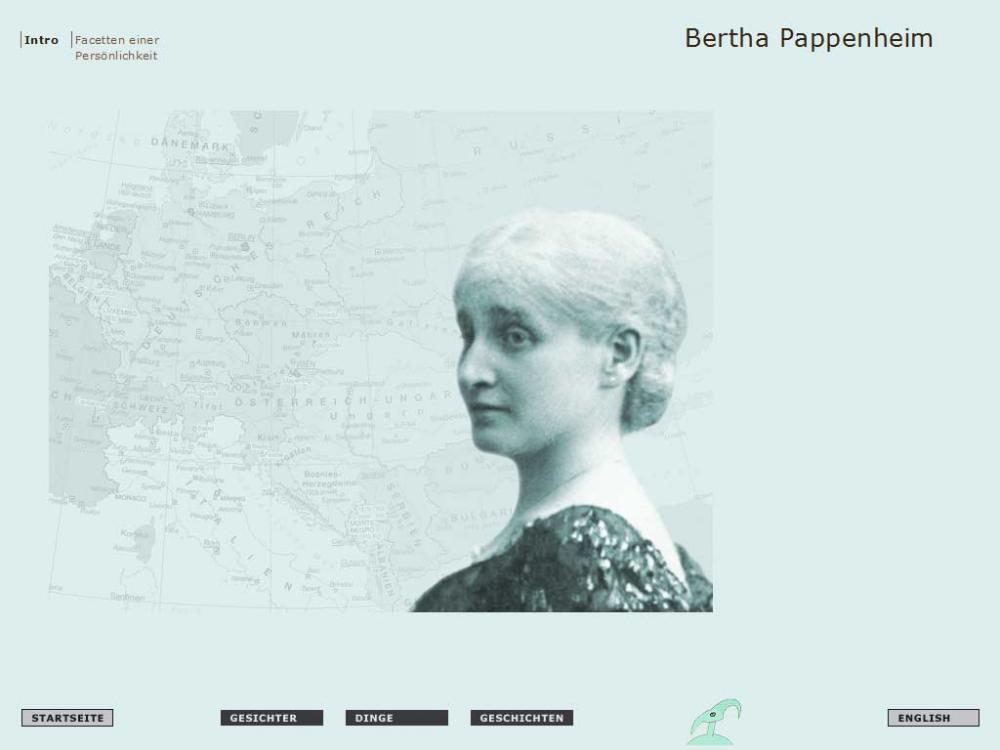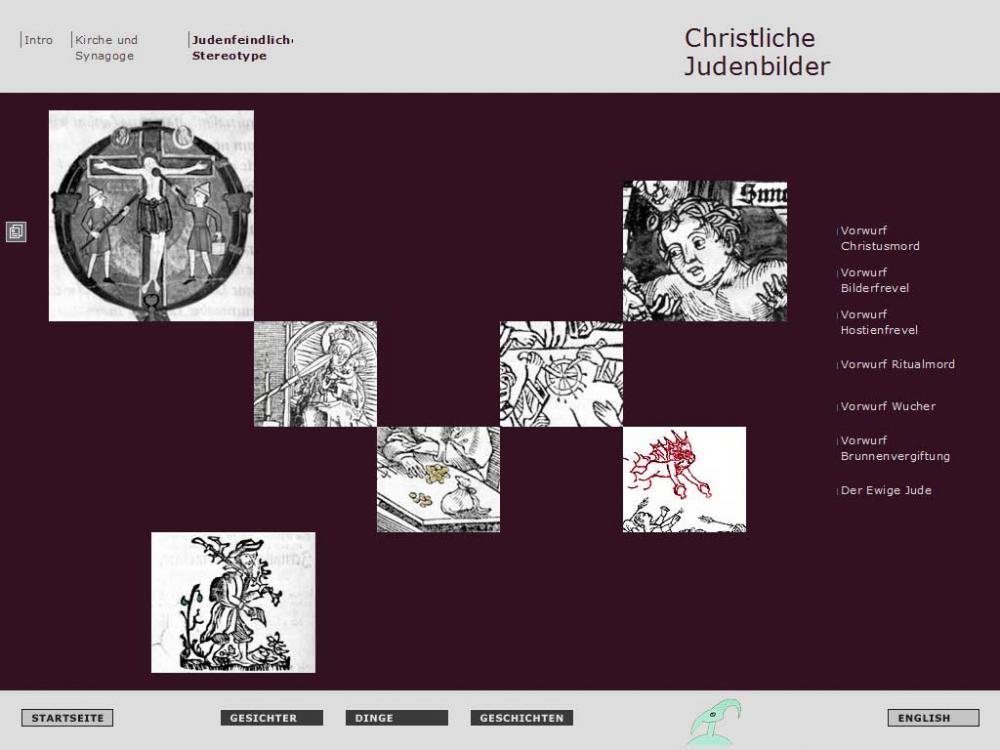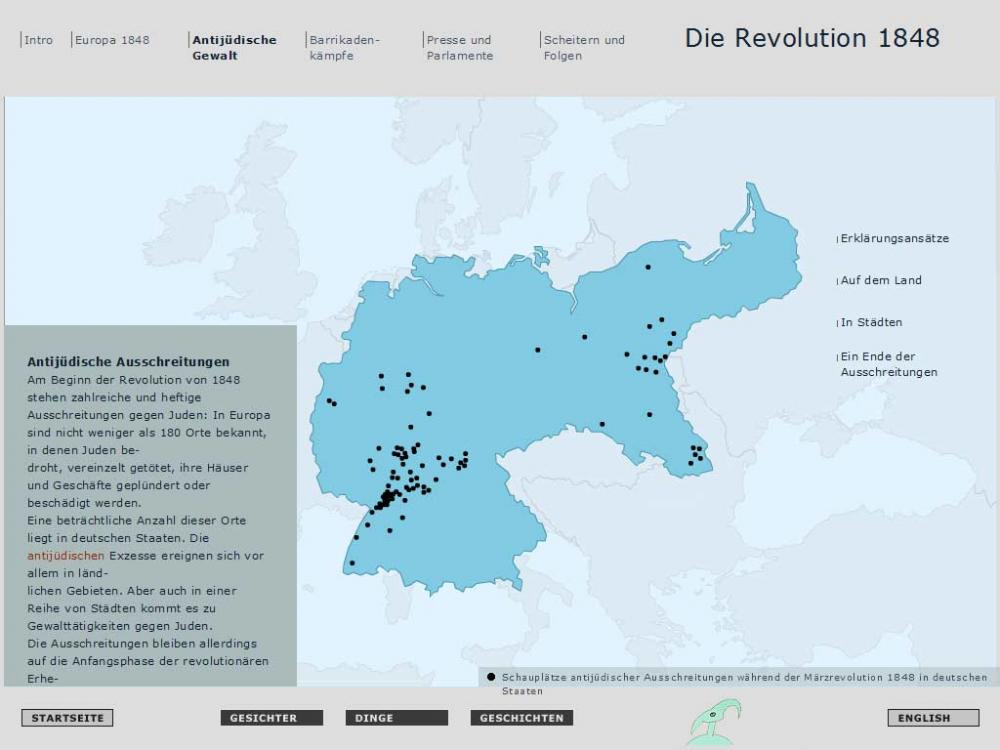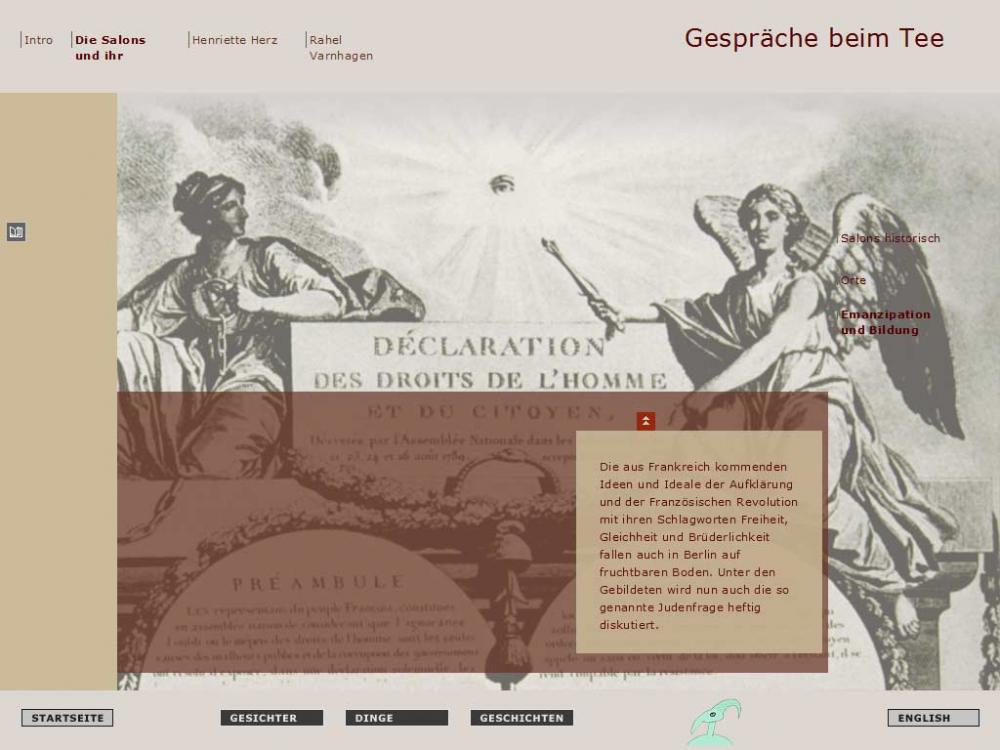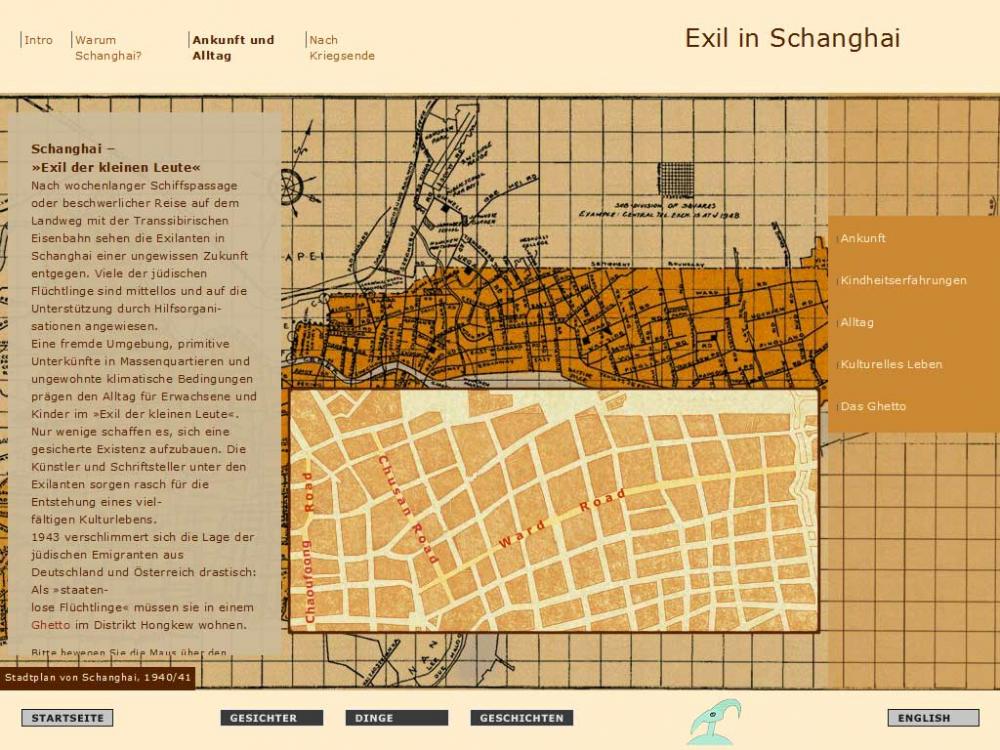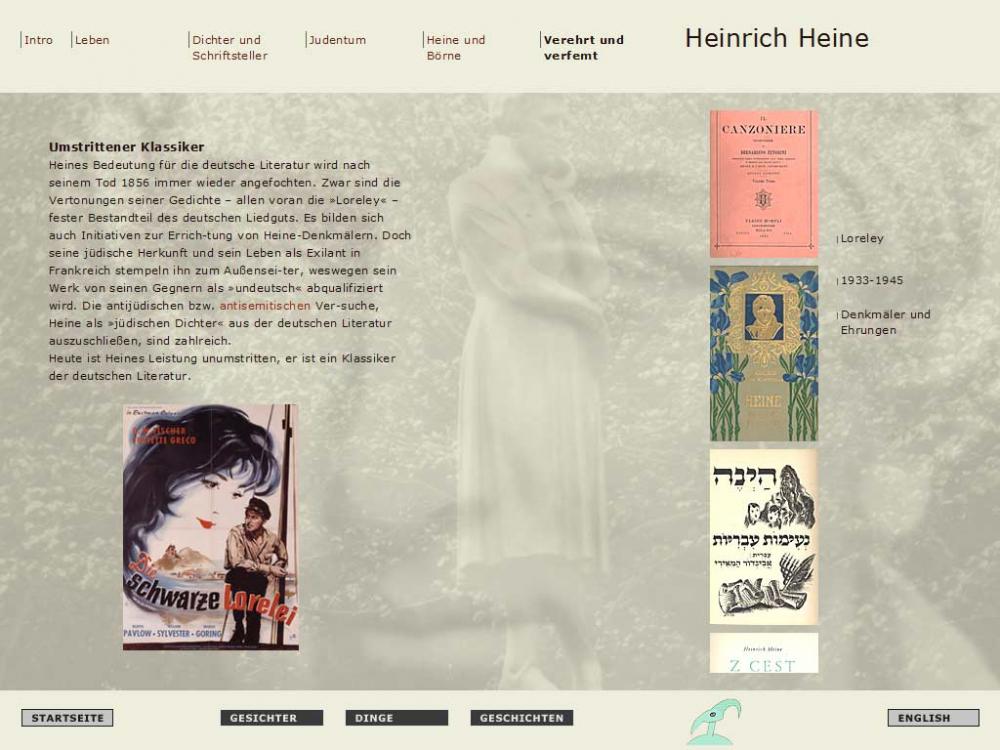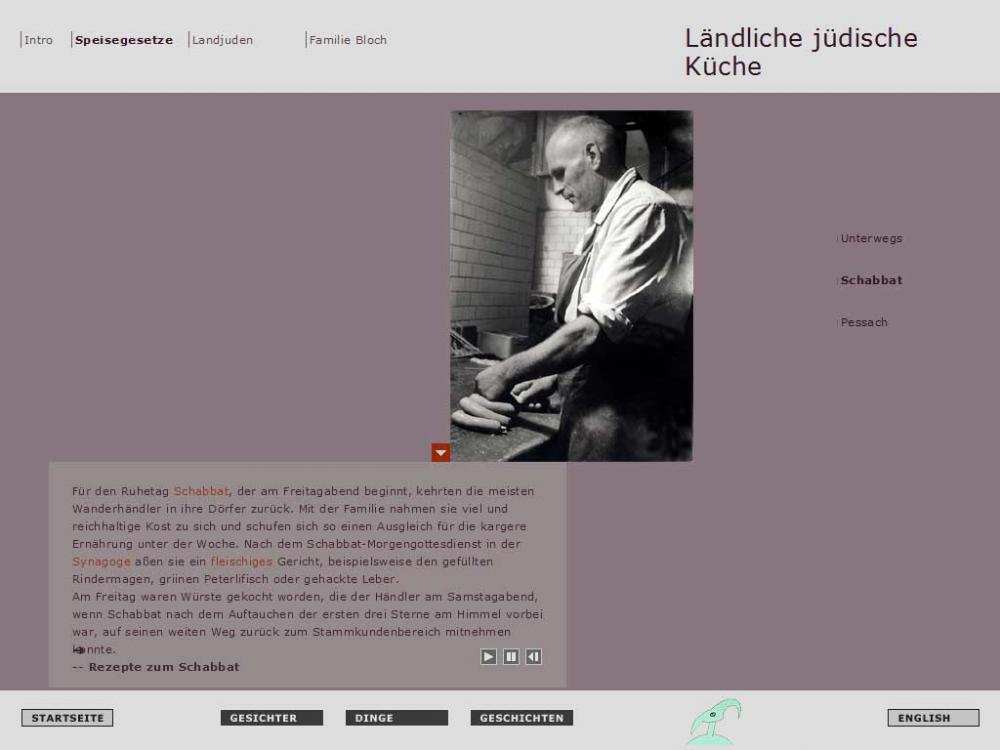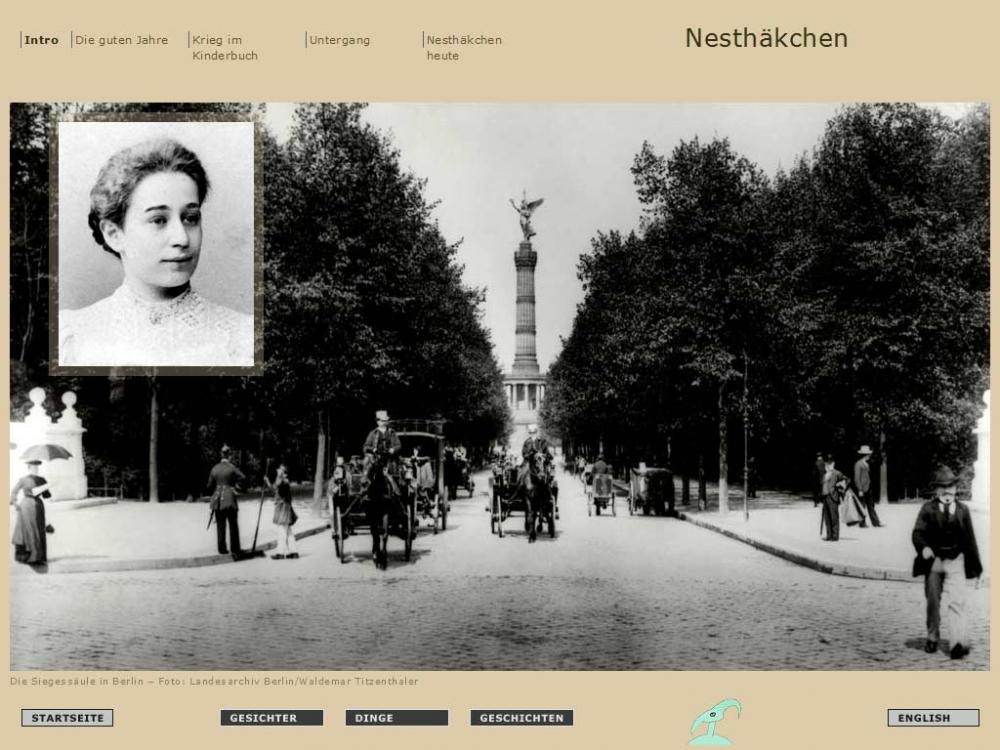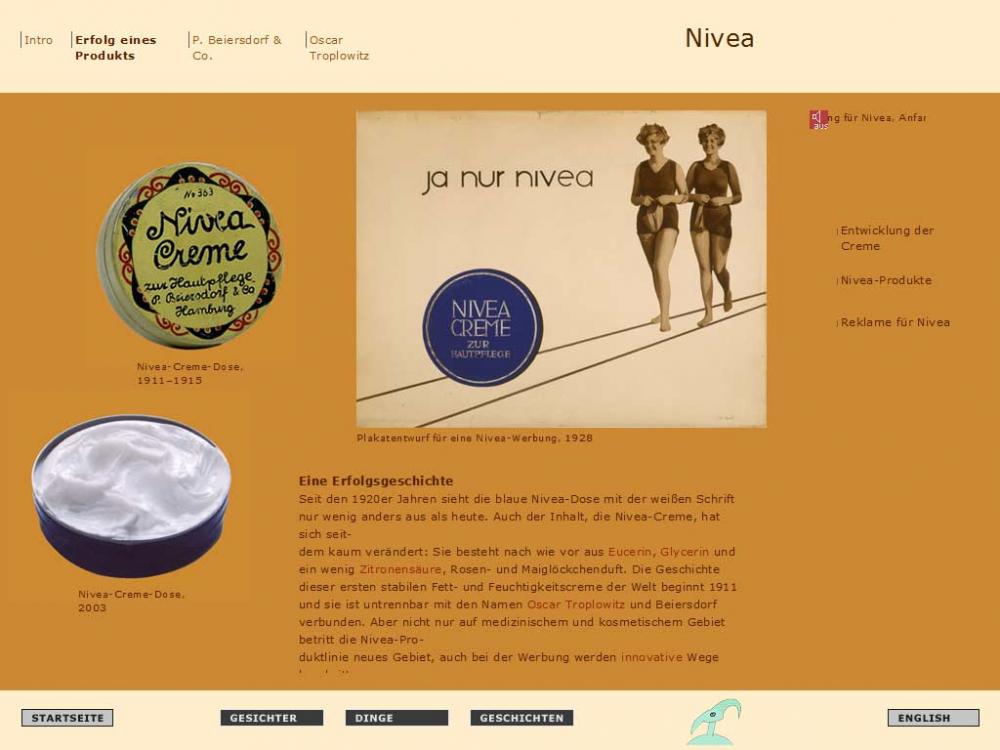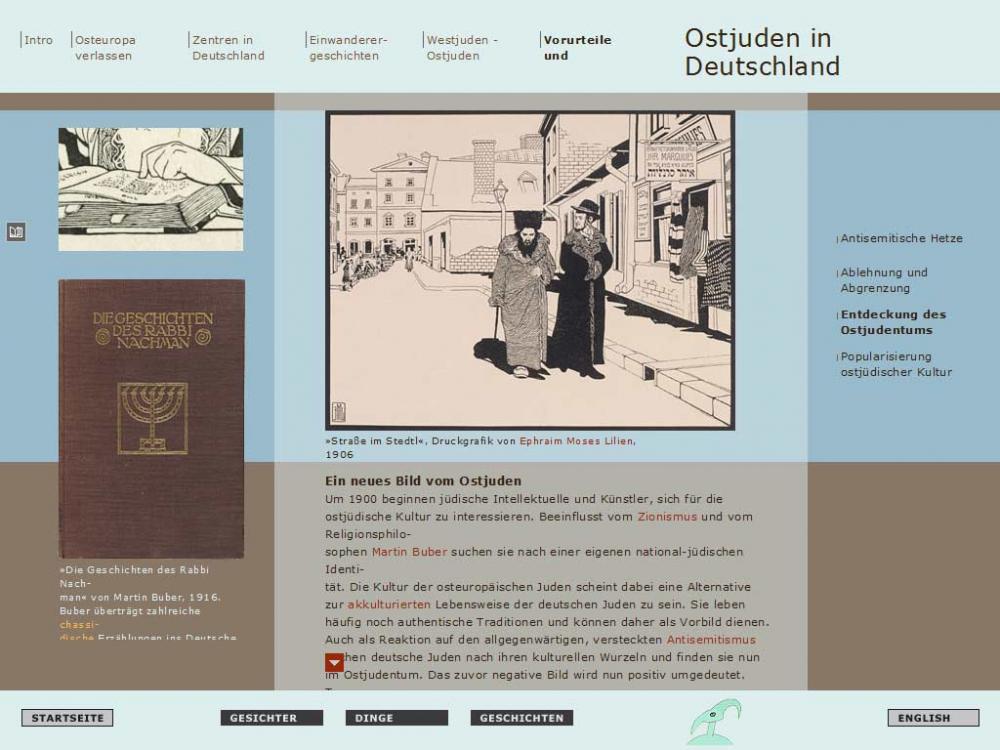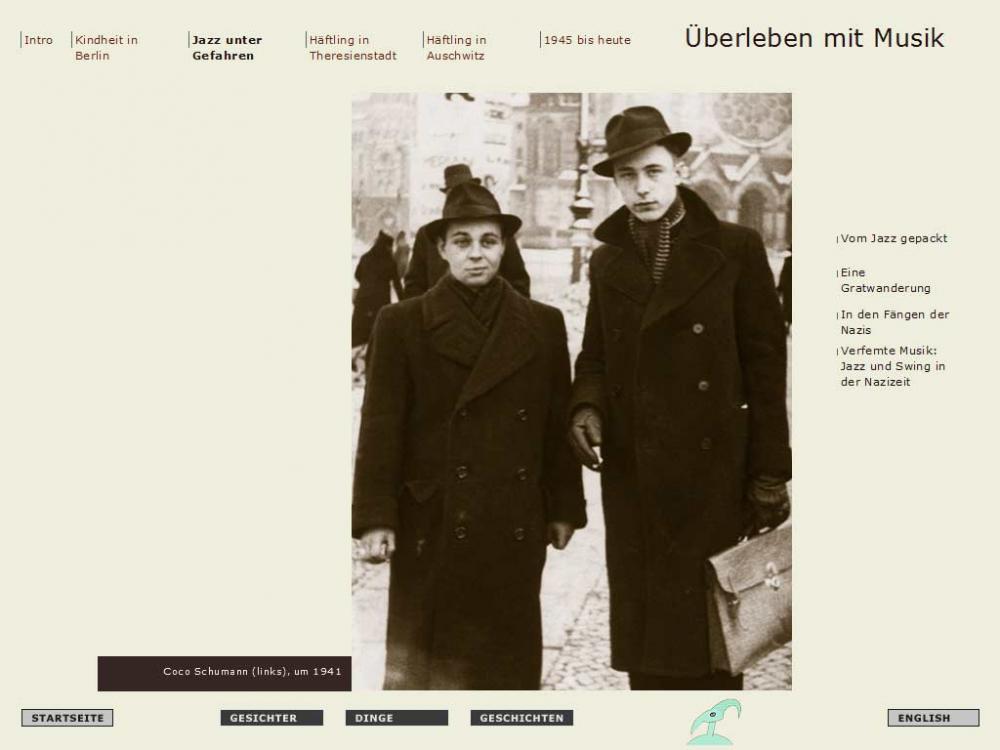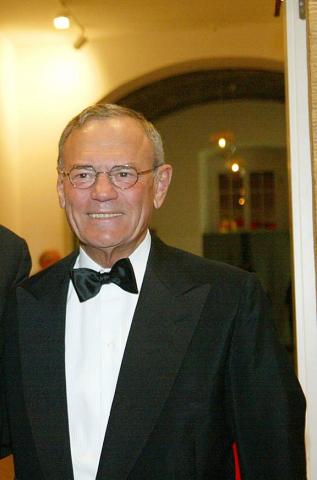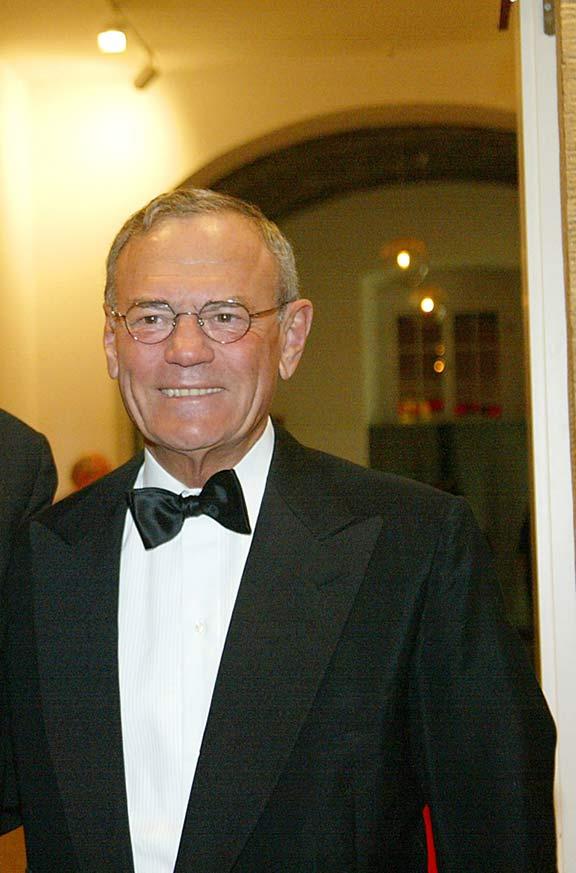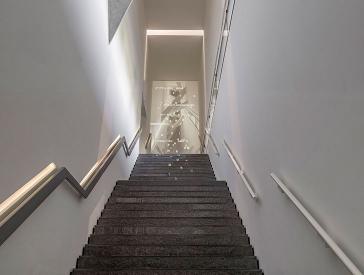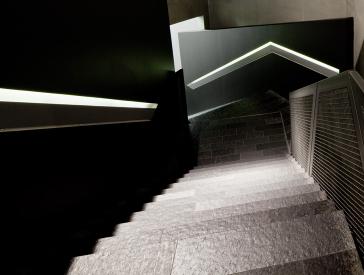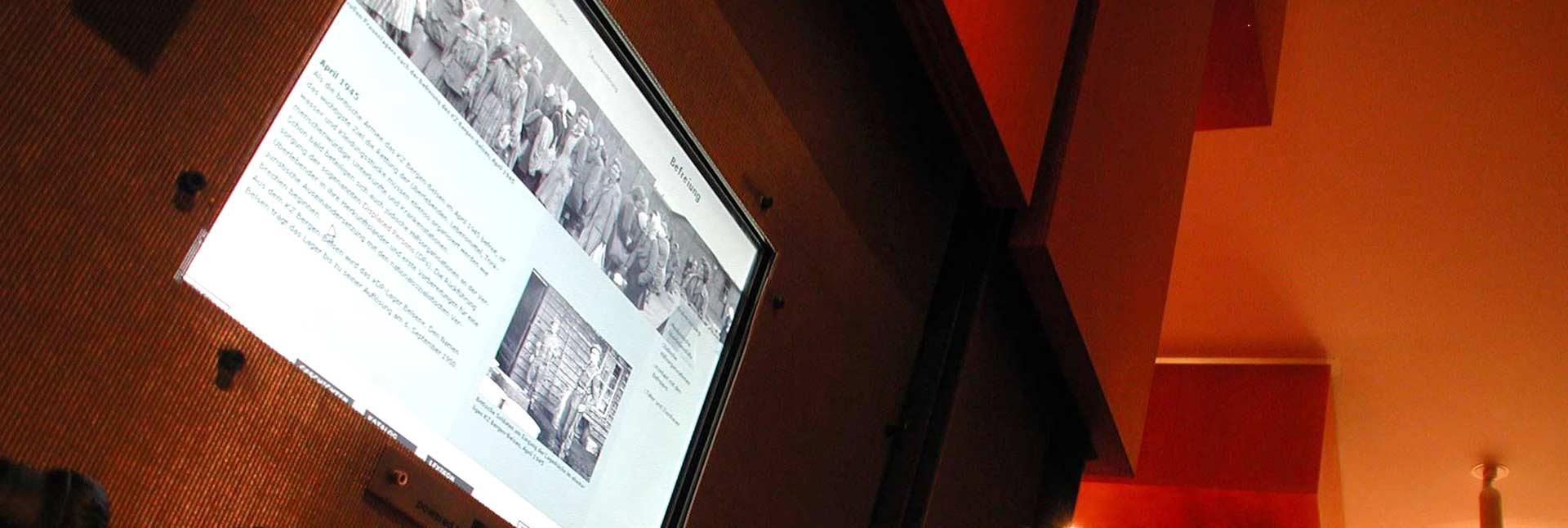
Rafael Roth Learning Center
A World of Multimedia Content on the Lower Level of the Museum 2001–2017
The Rafael Roth Learning Center offered diverse media applications that complemented the museum’s exhibitions. At computer workstations large and small, individuals and groups were able to view a wide range of multimedia content revolving around the museum’s main themes. Documents, objects, films, sound recordings, and interactive games illustrate the rich and constantly shifting history of Jews in Germany.
Past exhibition

Where
Libeskind Building, lower level
Lindenstraße 9–14, 10969 Berlin
The multimedia exhibitions explored history on the basis of biographies and events. Playing the Sansanvi’s Park computer game, children could learn about Jewish customs and the work at our museum. We introduced special objects from our collection and provided a glimpse behind the scenes of our collecting activities by sharing background information on the objects and documents. In the “Faces” film project, we presented interviews with Jews discussing their lives in Germany today.
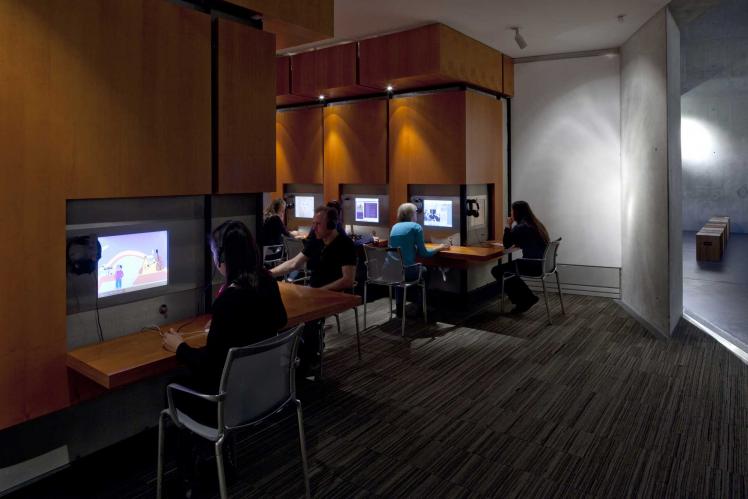
This is what the Learning Center supported by Rafael Roth looked like; Jewish Museum Berlin, photo: Thomas Bruns.
Multimedia Storytelling: Topics in the Learning Center
Stories were the first format developed for the Learning Center when it first opened for our visitors in 2001 alongside the museum's permanent exhibition.
Extensive multimedia material, illustrated life stories, historical events, religious festivals, and recurring themes in history. At the Learning Center, visitors could deepen their knowledge about the content of the museum, watch films, read literature, and listen to audio.
The Learning Center profiled fascinating and prominent individuals such as Bertha Pappenheim, founder of the Jewish Women's League; the physicist Albert Einstein; the Berlin jazz musician Coco Schumann; and the writer Else Ury, author of the Nesthäkchen series.
Glimpses into the Stories’ Screens
“Things” – Highlights from Our Collection
At the Rafael Roth Learning Center, we presented a variety of multimedia stories about objects from our collection. Visitors learned how the objects reached the museum, what they signify, and how they were used before they were acquired.
Films, interviews, animations, and games illuminated the objects’ backgrounds and showed the different perspective from which they can be viewed today. Donors, experts, and historical witnesses discussed the objects in interviews.
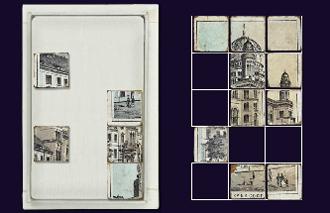
You can also view the puzzle with the photo of the New Synagogue in our online collections (in German)!

You can also view the puzzle with the photo of the New Synagogue in our online collections (in German)!
“Faces” – Jewish Life in the Present: A Film Project
The "Faces" interview project consisted of film footage in which Jews discussed their lives in Germany today. Their attitudes toward religion, society, home, and family were just as varied as their lifestyles, backgrounds, and age groups.
The first selection of interviews was presented at the Kosher & Co exhibition in autumn 2009. The complete set of interviews could then be viewed at the computer workstations of the Rafael Roth Learning Center.
In the film What Does Kosher Mean for You?, interviewees described what Jewish dietary laws mean for them today, discussing rituals and traditions, family and friends, and discrimination and exclusion. They addressed the freedom that comes with foregoing certain foods, as well as the allure of the forbidden. They also touched on organic products and vegetarianism.
Members of a Berlin family discussed the weekly Shabbat and their difficulties finding kosher meat. An important topic for Jews from the former GDR and Eastern Europe is how they rediscovered Jewish traditions following the collapse of Communism in 1989. But other interviewees felt estranged from these traditions.
How can Jews develop and live a Jewish identity in a non-Jewish environment? As one interviewee, Hillel, puts it,
"The rules are suggestions… They provide a framework for experimentation."
The interviews documented the wide range of Jewish lifestyles today, all presented in a non-linear interactive film. In order to create a form that could connect all this film content, we used the Korsakow System developed by Berlin media artist Florian Thalhofer.
Sansanvi’s Park. A Multimedia Application for Children
Sansanvi’s Park was a computer game designed for elementary school students that could be played at the computer stations of the Rafael Roth Learning Center.
The children accompanied the park’s residents – Benny, Anna, Ilana, Cem, and Heinz – to different destinations on the grounds. Benny showed the youngsters what a synagogue looks like and attended a service on Rosh Hashanah, the Jewish New Year. In the music tent, Cem played selected songs from his collection of records from around the world. Heinz took the children to the Jewish Museum Berlin and showed them what kinds of objects it collects. And Sansanvi, a character from Jewish mysticism, explained how to play the game.
In 2006, Sansanvi’s Park was the winner in the "Private Learning" category of Digita, the German educational media awards.
Thanks to the Collaborators on the Learning Center
The Learning Center was made possible by a generous donation from the Berlin entrepren€ Rafael Roth. Michael Rubin undertook the interior design.
Sincere thanks are due to all those who have been involved in the design and development of this unique center:
- The authors: Ulrich Baumann, Bernd Braun, Christian Dirks, Karin Grimme, Uri R. Kaufmann, Sabine Kößling, Kolja Kohlhoff, Maren Krüger, Yael Kupferberg, Sibylle Kussmaul, Léontine Meijer, Almut Meyer, Barbara Rösch, Sylvia Rogge-Gau, Jan-Christian Schwarz, Donate Strathmann, Jutta Strauss, Martina Voigt, Christine Zahn
- The designers: Holger Bechtold, Michael Butschkau, Christiane John, Dirk Oßwald, Silke Oßwald, Stephanie von Ow, Kathrin Zinkmann
- Pandora Neue Medien for the development of the software environment Pan-Net™ ORA System, Timm Ringewaldt (autokolor) for the creation of the introductory film, and Sabina Nordalm for designing the stools in the Auditorium
- And: Adam Blauhut, Arno Dettmers, Tobias Ebbrecht, Monika Flores Martínez, Louise Garrett, Dagmar Ganßloser, Jenny Gebel, Etta Grotrian, Koray Ali Günay, Edna Herlinger, Veronike Hinsberg, Henriette Kolb, Sabine Kühl, Gisela Lemke, Elke Mohr, Susan Richter, Ann Robertson, Karin Sakowski-Middelhoek, Bettina Schob, Christina Scholten, Christina Thesing, Barbara Thiele, and Roswitha Ulrich
Exhibition Information at a Glance
- When 13 Sep 2001 to 2 Apr 2017
- Where Libeskind Building, lower level
Lindenstraße 9-14, 10969 Berlin]
See Location on Map
In Memory of Rafael Roth
In late 1998, long before the Jewish Museum Berlin opened its doors, the Berlin entrepren€ Rafael Roth offered to support the museum financially. He was committed to W. Michael Blumenthal’s vision of a center dedicated to research on and education in the history of Jewish life in Germany.
Roth was enthusiastic about the idea of a modern media center that would enable visitors to explore Jewish history in an interactive format. His generous donation funded the architecture, the concept and the technical development of this center, located on the subterranean level of the Daniel Libeskind building. When the “Rafael Roth Learning Center“ was inaugurated together with the permanent exhibition on 9 September 2001, it fulfilled its initial purpose, namely to be “the most up-to-date, most impressive and most important center of its kind.” Twelve years later, the media-lounge and study rooms still attract a great number of museum visitors.
Rafael Roth died on 21 September. The Jewish Museum Berlin is highly indebted to him and remembers him in great fondness.
Mirjam Wenzel and Henriette Kolb, Media
First published on Blogerim, 24 Sep 2013
